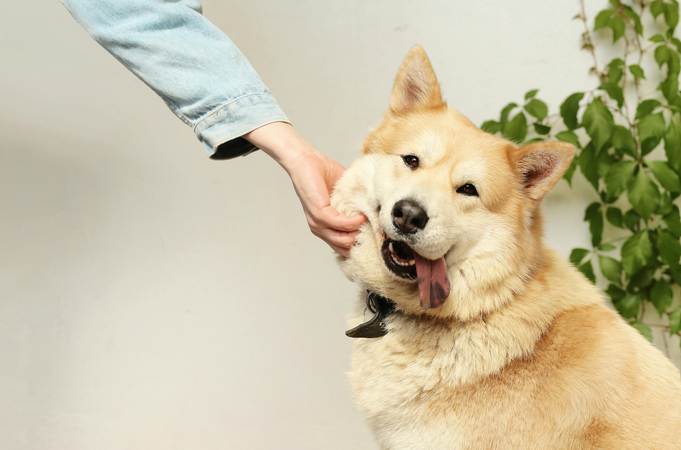Bringing home a new dog is an exciting experience but has its fair share of responsibilities. While it’s natural for new canine owners to make a few mistakes along the way, certain errors can affect the bond and well-being of your furry friend. Healthy Dog Care Practices go a long way in fostering a good and lasting bond between you and your furry friend. This dog guide highlights common mistakes to avoid, helping ensure your journey as a dog owner is smooth, rewarding, and enjoyable.
Skipping Socialization and Basic Training
Socialization is critical to any dog guide, as it lays the foundation for a well-rounded, happy dog. Some new owners may skip or delay socialization, hoping their dog will “grow out” of certain behaviors. However, without exposure to different people, environments, and other animals, dogs can develop anxiety, fear, or aggression. Begin socialization early, introducing your dog to new settings and supervised interactions with people and pets. Basic training should also be a priority. Commands not only establish boundaries but also improve safety and obedience. Focusing on these early can prevent behavioral issues in the future and make day-to-day interactions much smoother.
Overfeeding and Offering Too Many Treats
In their excitement to please their new pet, some dog owners may fall into the habit of overfeeding or giving too many treats. This can quickly lead to weight gain and health issues like obesity and joint stress. An effective dog guide recommends controlling portion sizes and sticking to a balanced diet tailored to your dog’s breed, age, and activity level. Use treats sparingly, mainly as a training tool, and consider healthier options like small pieces of fruits or vegetables (safe for dogs) as alternatives. When feeding your dog, avoid giving table scraps, as certain human foods are harmful. Monitoring your dog’s weight and diet supports their long-term health and well-being.

Giving Inconsistent Training and Mixed Signals
A common mistake among new dog owners is inconsistency in training. For example, allowing your dog on the couch sometimes but scolding them for it later sends mixed signals, leading to confusion and frustration. Dogs thrive on clear expectations and consistent rules, which help them understand boundaries. Consistency in training, language, and rewards reinforces learning and promotes good behavior. For instance, if you’ve trained your dog to sit before receiving food, ensure everyone in the household follows this practice. Establishing clear rules from the beginning sets a strong foundation and helps your dog feel secure.
Neglecting Exercise and Mental Stimulation
Exercise and mental stimulation are essential for a dog’s physical and mental health. New dog owners sometimes overlook these needs, especially if they have a busy schedule or live in a small space. Regular physical activity helps manage your dog’s energy, reduces stress, and prevents destructive behaviors. Each breed has specific exercise requirements, so familiarize yourself with the activity level your dog needs. In addition to daily walks, incorporate games and mental activities like puzzle toys to challenge their minds. Adequate exercise and mental engagement lead to a happier, calmer, and more well-adjusted pet.
Owning a dog is a joyful journey that requires commitment, patience, and care. By avoiding these common mistakes, new canine owners can provide a nurturing environment where their dog feels safe, loved, and well-behaved. As this dog guide emphasizes, setting consistent rules, prioritizing health, and fostering positive interactions create a fulfilling bond that will grow over time. Embrace these tips, and you’ll be well-equipped to enjoy the rewards of a strong, lifelong companionship with your furry friend.…



 Goldfish, with their vibrant colors and distinctive features, are a beloved choice among fish enthusiasts. These elegant creatures come in various shapes and sizes, from the classic round-bodied Goldfish to long-bodied varieties like the Comet and Shubunkin. One of the reasons Goldfish are so popular is their ability to adapt well to different environments. They can thrive in both indoor aquariums and outdoor ponds, making them versatile pets for all types of fish keepers.
Goldfish, with their vibrant colors and distinctive features, are a beloved choice among fish enthusiasts. These elegant creatures come in various shapes and sizes, from the classic round-bodied Goldfish to long-bodied varieties like the Comet and Shubunkin. One of the reasons Goldfish are so popular is their ability to adapt well to different environments. They can thrive in both indoor aquariums and outdoor ponds, making them versatile pets for all types of fish keepers.
 Tetras are small, colorful freshwater fish that have become quite popular among aquarium enthusiasts. They are known for their vibrant hues and active behavior, making them a beautiful addition to any tank. One of the reasons why tetras are so beloved is because they come in a wide variety of species. From the neon tetra with its striking blue and red colors to the black skirt tetra with its flowing fins, there is a type of tetra to suit every taste.
Tetras are small, colorful freshwater fish that have become quite popular among aquarium enthusiasts. They are known for their vibrant hues and active behavior, making them a beautiful addition to any tank. One of the reasons why tetras are so beloved is because they come in a wide variety of species. From the neon tetra with its striking blue and red colors to the black skirt tetra with its flowing fins, there is a type of tetra to suit every taste.
